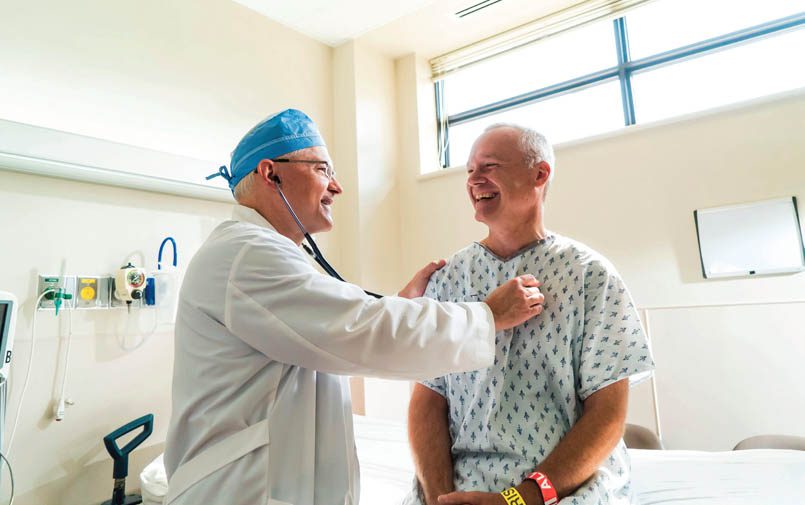20 Jan 2020 Technology helps cardiologists pinpoint stent placement

by John Patton
Conway Regional is the first health system in Arkansas to have the new Philips IntraSight with Sync Vision cardiovascular technology. The new imaging technology is an important step in providing the most innovative care for patients.
The IntraSight technology allows cardiologists to precisely identify the location of blockages within the coronary artery. Interventional cardiologists at Conway Regional began using the new imaging technology in December.
The technology works by sending a tiny camera into the vessels of the coronary artery where it records and overlays two separate images of the vessels to determine the best place for a stent to clear blockage. This also provides enhanced visuals during image-guided procedures of the heart or surrounding vessels. It gives cardiologists the capability to pre-plan stent placement prior to the procedure.
“It gives us a precise treatment plan for each individual patient,” says Paula Weatherley, director of cardiovascular services. Weatherley previewed the technology at Barnes-Jewish Hospital in St. Louis last year and all three of Conway Regional’s interventional cardiologists endorsed it, including Dr. Lensey Scott, Dr. Don Steely and Dr. Deepali Tukaye.
Symptoms of a blocked coronary artery include shortness of breath, nausea, pain in the arm or chest (men) and other indicators of heart failure and heart attack. Patient benefits include reducing the cost of heart catheterization procedures and a faster and more efficient treatment time.
The imaging platform is approved by the U.S. Food and Drug Administration, and training included the team of interventional cardiologists at Conway Regional as well as the support staff.
Innovative services
The new imaging platform represents one of the many ways Conway Regional is growing the healthcare services it provides to the community.
Alongside the growth of the communities it serves, the health system is currently in a $60 million capital investment project that will expand and enhance services, touching a total of 19 areas of the health system. Elements include a three-story medical office building and a new façade that will connect the building to the emergency room, allowing easier access and navigation of the hospital.
A keystone element of the project is a new and expanded critical care unit. Critical care includes advanced life-saving care for cardiology, surgical, respiratory and other patients with critical injury and illness.
With the expanded space, Conway Regional looks forward to adding new technologies and building larger rooms to accommodate patients and families.










